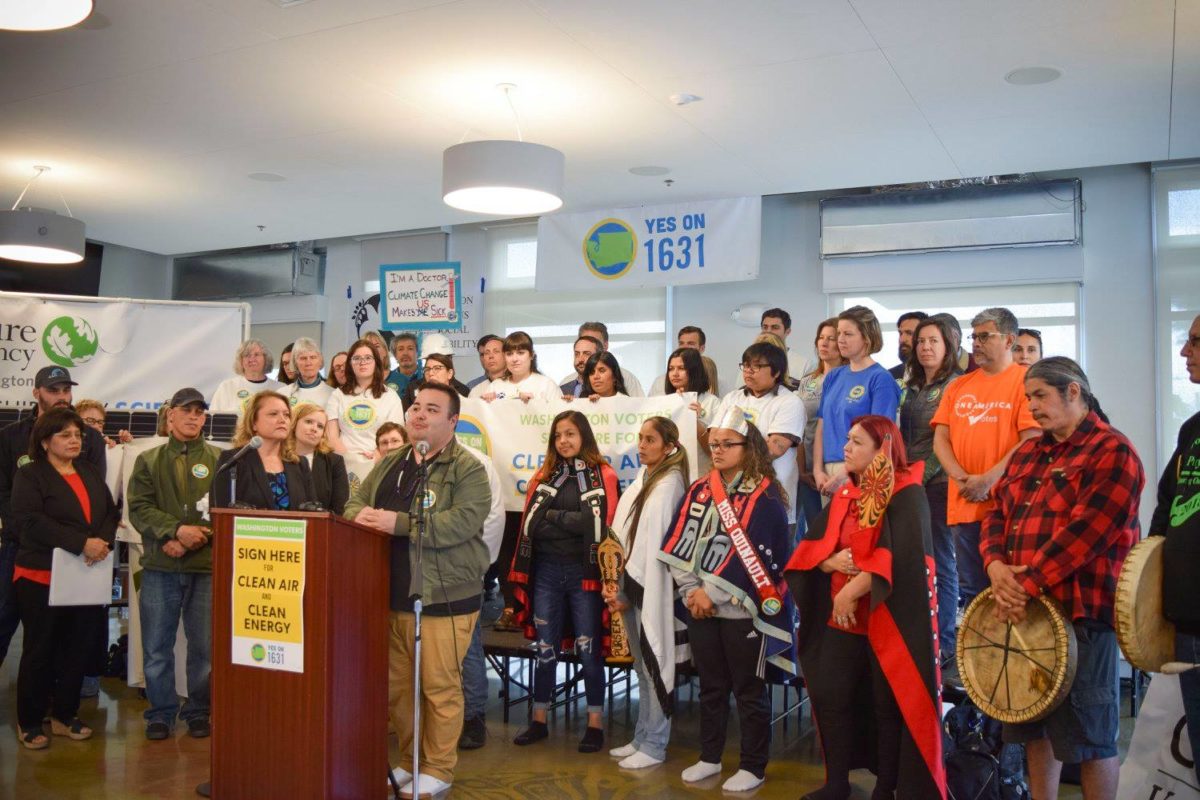
A proposed carbon fee on large polluters will be on November’s ballot, and supporters say that it brings focus — and funding — to the needs of communities most vulnerable to pollution.
The creation of Initiative 1631, also named the “Protect Washington Act,” was led in large part by communities of color, said Nick Abraham of Yes On 1631.
If 1631 passes, the measure would charge the biggest polluters in the state an initial fee of $15 per metric ton of carbon content. That money would then be reinvested into clean air, water and energy projects.
The new initiative comes two years after state voters rejected Initiative 732, which called for a “revenue-neutral” carbon tax. Some of the biggest critics of I-732 included environmental justice groups who felt it did not address the needs of communities most impacted by environmental damage.
But, Initiative 1631 is different in key ways, environmental justice groups say.
“We played an important role in defining the priorities,” said James Williams, organizing director of Got Green, a Seattle-based organization that has been working toward environmental, racial and economic justice. One of Got Green’s core values is self-determination, meaning communities who are hardest hit by climate change and pollution should be the ones making decisions about how to address it.
I-1631 sought early input and support from communities of color, environmental and low-income advocates, labor unions, faith leaders and tribal nations, Abraham said.
Together, these supporters have formed the biggest initiative coalition in state history, he said.
If it passes, Washington would be the first state to implement carbon pricing aimed at lowering emissions, improving air quality and fighting climate change.
Differences
Critics of I-732 said it was supposed to be “revenue neutral” — meaning that the tax would be offset by tax cuts or credits elsewhere. But detractors felt that I-732 would end up being “revenue negative” for communities of color and low-income communities, who might lose services and education as a result of the tax cuts.
“It didn’t make investments in communities that were going to be hardest hit by climate change,” said Jesse Piedmont, director of the Sierra Club.
That won’t be the case this time around, supporters say.
Williams of Got Green said under 1631, the money collected will help the communities most affected by pollution, such as those living near toxic pollution sites. Often, these are communities of color and low-income neighborhoods.
“The last version of the carbon tax that came before, a lot of the revenue went back to the oil companies,” Williams said. “1631 revenue comes to communities that are most vulnerable to pollution.”
I-1631 would set aside funds to help reduce pollution, and it would also finance the transition to a clean energy economy for people most affected by it.
If the measure is passed and as the state moves to reduce pollution, the new policies could put a disproportionate burden on communities with lower incomes, in the forms of higher costs passed along to consumers. Also, as the fossil fuel industry turns toward clean energy industries like solar and wind, jobs will be eliminated and new ones created.
But the new initiative aims to counteract some of those effects. Some of the money from the carbon fees will be funneled to help eliminate financial burdens for low-income people and will pay for retraining workers for new jobs.
The initiative is also being praised for focusing on immediate climate change needs, such as infrastructure that would protect tribal nations and other vulnerable communities from things like rising sea levels, storms and wildfires.
As far as whether or not I-1631 can be used as a model for passing carbon fee legislation across the country, Abraham said the focus was on what would work for Washington state. Part of that meant giving all the stakeholders a seat at the table.
“If you’re really serious about reducing pollution, you should really be talking to the people who are going to be the most affected,” he said.
The measure will appear on the ballot Nov. 6, 2018.


Thanks for covering this angle, Aliah, great work! If you’re interested in another angle on climate action in Washington, the women’s movement is over here at: http://www.washingtonwomencan.org/
Thanks Aliah!
I-732 would’ve made a huge investment in low income communities via the working families rebate, up to $2500 per year per household, to the tune of over 200 million statewide. So, Jesse’s quote is factually wrong.
1631 takes a different approach of setting aside about the same amount of money to be doled out by a board via weatherization and public grants. I doubt that money will actually trickle down and help households as directly as a cash rebate would, though its likely to have some positive impact. The great irony of 1631 is that it probably is more regressive than 732, even though its billed as a major equity initiative.